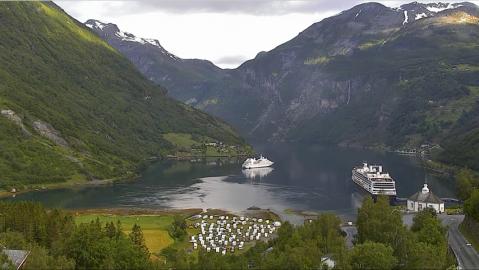Gribshunden (or Griffen), sunk in 1495, is possibly the best preserved 15th century warship in the world. Probably built in the Netherlands with timber from France, used by the Danish king on travels to England, Norway and Sweden, it is truly an international shipwreck. Since it is carvel built, it can also give important clues to the ship building techniques used by the great explorers, Columbus and Vasco da Gama.
A Gribshunden seminar took place in Ronneby, Sweden in November 2015. The aim of the seminar was to present current stage of investigation of the shipwreck. Blekinge museum and the county administrative board of Blekinge invited researchers, conservators and archaeologists from different parts of Europe to share their research and their view on Gribshunden.
Gribshunden in the archives - research: Ingvar Sjöblom (Swedish Defence University), presentation: Johan Rönnby (MARIS)
One of the most interesting research methods is when archaeological findings can be supplemented by their contemporary written sources. For this presentation Ingvar Sjöblom has compiled medieval texts regarding the ship Gribshunden and discussing them in their historical context.
Gribshunden is mentioned as the Griffen in the 15th century sources. It occurs four different times between the years 1486 and 1493 as a royal naval ship. The Griffen and the other ships on the list of the fleet are early examples of the evolving modern state. During this period in time the ships belonged to king Hans of Denmark (1455-1513). He endured a century with ongoing turbulence among the Scandinavian countries. When Gribshunden capsized in 1495 it was on its way to Kalmar, and a royal meeting between king Hans and the Swedish king Sten Sture (1440-1503). Five different authors describe the event on how it sank outside of Ronneby. One of the authors, Tyge Krabbe was an eyewitness, a passenger on the ship. He tells us that the king was not onboard the ship and that most of the passengers died in the explosion.
The ship was found outside the island of Ekö, in the archipelago of Ronneby, like the written sources tell us. In addition to this, the results from dendrochronological dating state that the wood from the ship was cut down in 1482-1483 in the northern parts of France.
In upcoming research it would be interesting to know where the ship came from. Did the Danes import the wood from France and then built the ship themselves, or did they import an already made ship from the northern regions of France? Perhaps there are even more possibilities.
A Gribshunden seminar took place in Ronneby, Sweden in November 2015. The aim of the seminar was to present current stage of investigation of the shipwreck. Blekinge museum and the county administrative board of Blekinge invited researchers, conservators and archaeologists from different parts of Europe to share their research and their view on Gribshunden.
Gribshunden in the archives - research: Ingvar Sjöblom (Swedish Defence University), presentation: Johan Rönnby (MARIS)
One of the most interesting research methods is when archaeological findings can be supplemented by their contemporary written sources. For this presentation Ingvar Sjöblom has compiled medieval texts regarding the ship Gribshunden and discussing them in their historical context.
Gribshunden is mentioned as the Griffen in the 15th century sources. It occurs four different times between the years 1486 and 1493 as a royal naval ship. The Griffen and the other ships on the list of the fleet are early examples of the evolving modern state. During this period in time the ships belonged to king Hans of Denmark (1455-1513). He endured a century with ongoing turbulence among the Scandinavian countries. When Gribshunden capsized in 1495 it was on its way to Kalmar, and a royal meeting between king Hans and the Swedish king Sten Sture (1440-1503). Five different authors describe the event on how it sank outside of Ronneby. One of the authors, Tyge Krabbe was an eyewitness, a passenger on the ship. He tells us that the king was not onboard the ship and that most of the passengers died in the explosion.
The ship was found outside the island of Ekö, in the archipelago of Ronneby, like the written sources tell us. In addition to this, the results from dendrochronological dating state that the wood from the ship was cut down in 1482-1483 in the northern parts of France.
In upcoming research it would be interesting to know where the ship came from. Did the Danes import the wood from France and then built the ship themselves, or did they import an already made ship from the northern regions of France? Perhaps there are even more possibilities.
- Category
- BLEKINGE
Commenting disabled.





